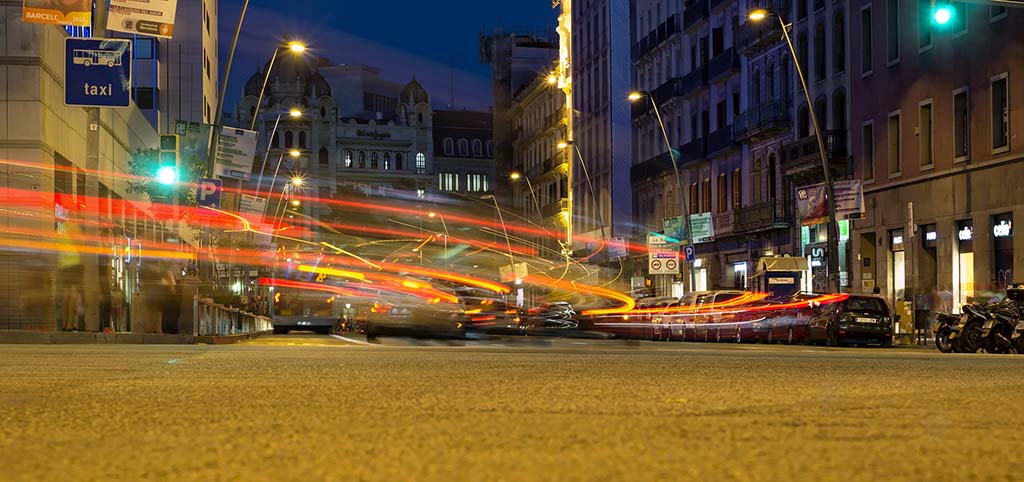Traffic Noise Causes as Much Disease as Air Pollution
Improved urban and transport planning could reduce the total burden of disease in Barcelona by 13%
30.08.2017
The city of Barcelona could reduce its burden of disease by 13% annually by complying with international recommendations on physical activity, access to green spaces, and exposure to air pollution, noise and heat. Road traffic noise is the factor that causes the most disease, followed by lack of physical activity and exposure to air pollution. These are the main conclusions of a new study by ISGlobal, a centre supported by the ”la Caixa” Banking Foundation. This is the first study to estimate the burden of disease associated with urban and transport planning in Barcelona.
The research, which has been published in Environment International, used the Urban and Transport Planning Health Impact Assessment (UTOPHIA) tool developed at ISGlobal. This methodology was first used last year to study the relationship between urban planning and mortality in Barcelona. That study concluded that improvements in urban and transport planning could prevent nearly 3,000 premature deaths every year.
The authors of the new study have estimated the burden of disease and the annual cost associated with this burden to the public health care system. They also compared annual exposure estimates for 1.36 million Barcelona residents aged 20 years or older with international guidelines.
Compliance with international recommendations on levels of physical activity, access to green space, and exposure to air pollution, noise and heat in Barcelona could prevent nearly 1,700 cases of cardiovascular disease, over 1,300 cases of hypertension, almost 850 cases of stroke and 740 cases of depression, among other health outcomes.
Traffic-related noise alone accounts for 36% of the total burden of disease attributable to urban and transport planning, an even higher percentage than that attributable to air pollution. The mean daytime and nighttime noise levels in Barcelona—65.1 and 57.6 decibels, respectively[1]—exceed the maximum levels of 55 and 40 decibels recommended by the World Health Organisation (WHO).
Natalie Mueller, ISGlobal researcher and lead author of the study, commented: “Our research indicates that traffic noise is a major health problem responsible for annoyance and sleep disturbance in many people.” She added: “Evidence shows that nighttime noise exposure is particularly harmful because it affects the regenerative processes that occur in the body during sleep. Traffic noise is also associated with hypertension, cardiovascular disease and stroke.”
Air pollution was also found to have a significant impact on health in Barcelona, accounting for 19% of the burden of disease associated with urban and transport planning. The annual mean concentration of fine particulate matter (PM2.5) in Barcelona is 16.6 μg/m3, whereas the guideline value recommended by the WHO is 10 μg/m3.
In the area of physical activity, 70% of Barcelona residents fall short of the minimum level recommended by the WHO (150 minutes of moderate activity or 75 minutes of vigorous activity per week). As for exposure to heat, summer temperatures in Barcelona exceed levels considered to be healthy. Finally, a third of the city’s population does not live near any green spaces.
The study estimated that the disease burden associated with poor urban and transport planning has an annual economic impact of more than €20 million in health care costs.
“The city of Barcelona contravenes international guidelines for physical activity, access to green spaces, and exposure to air pollution, noise and heat,” commented Mark Nieuwenhuijsen, coordinator of the study and Director of the Urban Planning, Environment and Health Initiative at ISGlobal. He also underscored the impact of noise on city residents: “It is often said that Barcelona is a noisy city, but often people don’t associate noise with health. However, our study demonstrates the association and indicates that urgent action is needed to address this problem.”
“There are two steps that could be taken to dramatically decrease Barcelona’s burden of disease: reduce the volume of motor traffic by promoting active modes of transport, and increase the amount of green space in the city. These two measures would increase levels of physical activity and reduce air pollution, noise and heat”, concluded Nieuwenhuijsen.
Reference
Mueller N, Rojas-Rueda D, Basagaña X, et al. Health impacts related to urban and transport planning: A burden of disease Assessment. Environment International, 2017 Oct;107:243-257. doi: 10.1016/j.envint.2017.07.020. Epub 2017 Aug 1.
[1] Data source: the Catalan government’s 2006 noise map, which shows levels very similar to those of 2012 (the last year for which official statistics are available.



